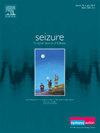癫痫护理中远程医疗使用情况的全球调查--COVID-19 大流行之前、期间和之后的做法。
IF 2.7
3区 医学
Q2 CLINICAL NEUROLOGY
引用次数: 0
摘要
目的:在 COVID-19 大流行期间,远程医疗被广泛用于癫痫护理。其作用不仅限于预防疾病传播,还提供了一种高效、优质的护理选择。为了解全球情况,一个国际小组进行了一项调查,比较了大流行之前、期间和之后癫痫护理中的远程医疗实践:调查包括 26 个问题,涉及人口统计学、远程医疗在癫痫护理中的应用、法规、报销机制和使用的工具。从 2023 年 6 月到 10 月,通过在线调查平台收集答复:来自 60 个国家的 285 名受访者参与了调查。大流行前,日常实践中使用远程医疗的平均比例为 0%,0-10%(中位数,IQR);大流行期间为 65%,30-90%;COVID 大流行后为 20%,10-50%。大流行后,女性受访者报告的远程医疗使用率高于男性(25 %,10-50 % vs 15 %,5 %-30 %,p = 0.002)。根据受访者的看法,36.8% 的受访者认为大流行后远程医疗法规的灵活性有所提高,17.2% 的受访者认为受到限制,46% 的受访者认为没有变化。在大流行期间,远程医疗的报销额度有所增加,但在大流行之后有所减少(Cochran's Q 检验,p < 0.001)。语音通话是使用最多的远程医疗平台(46.6%)。49名受访者(18.3%)报告了隐私问题:结论:大流行期间,远程医疗在癫痫护理方面的使用有所增加,并保持在高于大流行前的水平。然而,在远程医疗应用、法规、报销和患者隐私方面还需要改进。国际合作和经验交流可以提高全球对远程医疗的接受度和实践。本文章由计算机程序翻译,如有差异,请以英文原文为准。
A global survey of telemedicine use in epilepsy care – practices before, during and after the COVID-19 pandemic
Purpose
Telemedicine was widely adopted for epilepsy care during the COVID-19 pandemic. Its role extends beyond preventing disease transmission, offering an efficient and high-quality care alternative. To understand the global scenario, an international group conducted a survey comparing telemedicine practices in epilepsy care before, during, and after the pandemic.
Methods
The survey included 26 questions on demographics, telemedicine use for epilepsy care, regulations, reimbursement mechanisms, and tools used. Responses were collected via an online survey platform from June to October 2023.
Results
Two hundred eighty-five respondents from 60 countries participated. The average telemedicine use in daily practice was 0 %, 0–10 % (median, IQR) before the pandemic, 65 %, 30–90 % during the pandemic, and 20 %,10–50 % after the COVID pandemic. Female respondents reported higher telemedicine use than males after the pandemic (25 %, 10–50 % vs 15 %, 5 %-30 %, p = 0.002). According to respondents' perceptions, post-pandemic telemedicine regulations flexibilities were reported as expanded by 36.8 %, restricted by 17.2 %, and unchanged by 46 %. Reimbursement for telemedicine increased during the pandemic but decreased afterward (Cochran's Q test, p < 0.001). Voice calls were the most used telemedicine platform (46.6 %). Privacy issues were reported by 49 respondents (18.3 %).
Conclusion
Telemedicine use for epilepsy care increased during the pandemic and remained higher than pre-pandemic levels. However, improvements are needed in telemedicine applications, regulations, reimbursement, and patient privacy. International collaboration and experience sharing can enhance telemedicine's acceptance and practice globally.
求助全文
通过发布文献求助,成功后即可免费获取论文全文。
去求助
来源期刊

Seizure-European Journal of Epilepsy
医学-临床神经学
CiteScore
5.60
自引率
6.70%
发文量
231
审稿时长
34 days
期刊介绍:
Seizure - European Journal of Epilepsy is an international journal owned by Epilepsy Action (the largest member led epilepsy organisation in the UK). It provides a forum for papers on all topics related to epilepsy and seizure disorders.
 求助内容:
求助内容: 应助结果提醒方式:
应助结果提醒方式:


